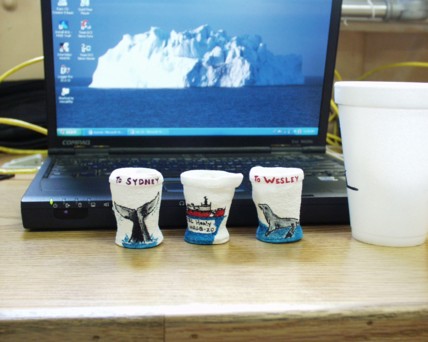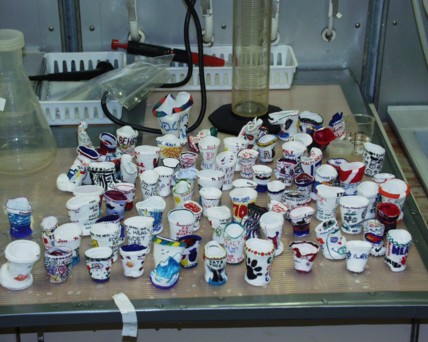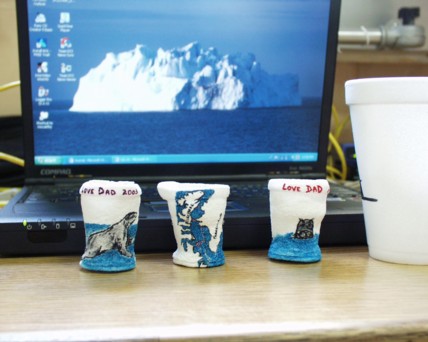|
|
Expedition
Expedition | People
|
Log - July-26-2003
by Robert McCarthy
Previous | Next
| Water testing begins |
| While IÕm waiting for the cups to return, my thoughts are in France, this being the penultimate day of this yearÕs Tour de France bicycle race. For those who do not know, American Lance Armstrong is trying for a record tying 5th consecutive win in arguably the toughest human sporting event, the Tour de France. Each year, riders struggle to make it over the high passes in the Alps and Pyrenees, and battle elbow to elbow in all-out sprints for the dream of a lifetime, to win a single stage in this revered event. To win the entire race is the dream of only a select few. This year, Lance has a formidable opponent in Jan Ullrich, and this yearÕs winner, even though there is one more stage tomorrow, will be determined today. It is a time trial race, where each rider goes off on the same course in 2 minute intervals starting with the last place rider. The final racer to leave is the current rider with the lowest accumulated time over this three week race. This year, Lance only has a 67 second lead over second place rider, Jan Ullrich. I hope that is enough---GO LANCE! |
| The Healy has a couple of "Life-Cycle" stationary bicycles on board, and this morning I chose the ÒWATTÓ workout. A watt is a Joule per second, which is a measure of power. Power is the amount of energy per unit of time. While using the "Life-Cycles", you can choose the power level, and the machine knows to adjust the resistance of the pedals based on the number of revolutions per minute (rpm) of your feet. So if the cadence drops (meaning that youÕre pedaling slower), the resistance goes up, and conversely if you pedal faster, the resistance goes down. This is opposite to what happens while on the road, since if you pedal faster, your speed goes up, and the wind drag increases as the speed squared. Anyway, after cycling for 1 hour at a moderate setting of 200 watts, I set the wattage to 350 watts, and barely kept my cadence at 100 rpmÕs for just 1 minute. The best cyclists in the world, Lance and Jan, can maintain approximately 500 watts for an entire hour. WOW, they are incredible. |
| If we now assume some simplifying assumptions, letÕs try to determine the force applied to each pedal to maintain my 350 watts, at 100 revolutions per minute for an entire minute. LetÕs assume that the crank arm of the ÒLife-CycleÓ is 175 mm, so that each foot pushes down 350 mm (0.35 meters), that each foot is independent of the other foot, meaning that weÕre not lifting up on the pedals or for that matter have the added resistance to raise the other foot while pushing down, and we will ignore internal resistance of the pedal arms. Since power is energy per time, and I maintained that power for 60 seconds, then the total energy is just 21,000 Joules (350 watts times 60 seconds). This energy is supplied by my work on those pedals, and work is a force times a distance. So dividing 21,000 Joules by the total distance of 70 meters (0.35 meters times my 100 rpmÕs times 2 for each foot) gives us 300 Newtons, or 67 lbs of force on each pedal 100 times a minute. |
 |
Now for the cups that returned after a 2430 meter descent to the ocean bottom. The cups were placed in nylon stockings, and each cup was separated from the next by either a rubber band or a knot around the stocking. These stockings were then placed in diving bags that allowed water to enter. Since there were a large number of cups, the condition upon return was pot luck. Some returned crumpled, folded, or in various states of compaction. |
 |
| I was lucky that mine were OK. The size reduction was about 2.25 times, so the volume reduction was about 11 times less. This was also tested by counting how many little cups were needed to fill the big cup. ItÕs amazing what 242 atmospheres can do to objects, and these considerations must be accounted for when engineers design oceanographic equipment, such as acoustic releases that will be discussed tomorrow. |
 |
|
